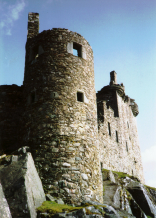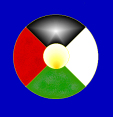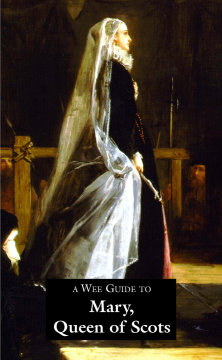Mary Queen of Scots: Pregnancies and Plots
Darnley was annoyed with Mary for giving the position of lieutenant-general to Bothwell, and this resulted in a violent disagreement, one of many, between the couple.
Darnley displayed little interest in affairs of state or the responsibilities of government. He even felt that Mary spent too much time on these issues. She was therefore reluctant to grant him the
crown matrimonial, which would have meant that the crown would pass to his family if she should predecease him. Unfortunately, official royal documents required both their signatures, and because
Darnley was absent so often from meetings Mary had a stamp made of his signature which could be used in his absence. Darnley’s childish behaviour was not only troublesome to Mary, but provided her
enemies with ammunition to use against her about her own unfitness to reign. Whatever the relationship was between the royal couple, things may have remained manageable, especially once Mary
discovered she was pregnant. A legitimate heir to the crown of Scotland would be a great boost to morale and a pointed message to Elizabeth in England who was, as yet, unmarried.
Mary was in the early stages of pregnancy after the Chaseabout Raid and an episode of illness had given rise to rumours, but it was not until she chose to travel back to Edinburgh
by carriage, rather than her customary horseback, that the rumour became official. This news may have been welcomed by most, but there were some who were not so pleased, particularly the Hamiltons.
Darnley, because of his arrogance and immaturity, became a useful weapon for Mary’s enemies. As he became increasingly distant from Mary, and she from him, the Queen’s enemies sowed seeds of doubt in
his mind – why would she not grant him the crown matrimonial giving him equal rights? Mary was a woman and as such was secondary to her husband and should respect him. Who did she spend her time with
when Darnley was out drinking?
This last question was also on the lips of many others and the answer, many felt, was obvious – David Rizzio, Mary’s Italian secretary. Rizzio had arrived at Mary’s court as a
musician, but having attracted Mary’s attention, his desire for promotion resulted in his appointment as her secretary. In this position, he naturally spent much time in Mary’s company and certainly
appeared to have some influence over her. This may simply have been because he was both good company and also listened to Mary’s problems, perhaps providing the emotional support that should have
come from her husband.
This position of proximity to, and the confidence of, the Queen gave rise to both jealousy in Darnley and fears in Mary’s enemies – the Earls Moray, Morton, Argyll, Glencairn and
Rothes, as well as other lairds. The Protestant nobles were annoyed that they had to ask Rizzio first before they could obtain an audience with Mary, and they also felt that as a Catholic he may have
been working for Philip of Spain to encourage Mary to start a Catholic revolt.
The Queen may have been aware of the rumours that were spreading about herself and Rizzio, but she must have felt that her reputation had already withstood gossiping prior to her
marriage and with her confinement fairly imminent there would be no reason for people to give them credence. Mary did not take into account that, although people may not believe malicious rumours,
they can be used to other ends. Gradually those involved in the Chaseabout Raid, and others, drew Darnley and his father Lennox into their schemes.
Parliament was due to meet in March at which time the Chaseabout rebels were due to be charged with treason, and there were rumours that if Mary went ahead with this there would be
trouble. The rumours were well known, even Elizabeth heard them, but although Mary considered pardoning the rebels, she changed her mind. She had been advised by her uncle the Cardinal of Lorraine to
join with a league of leading continental Catholics. Although Mary did not agree to join the league, she announced that the meeting of parliament would go ahead – despite the possible threat from the
rebels and their supporters.
The rebels had to act quickly, and therefore a bond was drawn and signed whereby it was to be ensured that the rebels would not be prosecuted. The actual wording was un-specific
but Rizzio was to be got rid of by some means; and Darnley, in return for his support, would be guaranteed the crown matrimonial. Cunningly two of the signatories – Moray and Maitland – did not
actually sign the bond even although they were most certainly involved.
On the evening of 9 March 1566, two days after the session of parliament when it was decided that the rebels would be summoned on 12 March, David Rizzio was murdered in front of
the heavily pregnant Mary. She had been dining in her rooms at Holyrood Palace with her half-sister Jean, Countess of Argyll, her half-brother Robert Stewart and others of her household including
Rizzio. Although it was Lent, because Mary was pregnant, she was excused from fasting, and just as the meal was served Darnley appeared from his apartments, accompanied by Patrick, third Lord
Ruthven, dressed in full armour. Ruthven was actually very ill at the time and looked extremely pale, and because he had a reputation for being interested in sorcery and the black arts, those in the
room thought they were seeing a ghost. Ruthven, in reply to Mary’s surprise, announced that he had come for Rizzio. Thereupon Rizzio attempted to hide – but to no avail.
Mary’s attendants attempted to restrain Ruthven but as he pulled out a pistol the Earl of Morton’s men burst into the room. Rizzio was stabbed as many as 56 times, and his body discarded over a chest – later his fine clothes were stolen by a porter. He is buried in Canongate cemetery, near Holyrood. Darnley’s dagger was
certainly used in the murder but it was used by his uncle, George Douglas, since – true to form – Darnley hung back during this fatal act.
Mary, once she recovered her wits, accused Darnley of betraying her, to which he replied that she had betrayed him with Rizzio. She was very angry,
both for her secretary and for herself and her unborn child. When she retired for the night her thoughts were occupied with how much danger she was in, and how to make the best of this disaster.
Indeed this latter thought probably weighed on the mind of her unreliable husband, as the next morning he came to her full of contrition. He was no doubt frightened by the situation, but once again
Mary demonstrated her greater maturity by pointing out the political consequences of the murder. Darnley confessed the conspirators’ plans to her, and it was then up to Mary to plan their escape.
Whatever had happened, Darnley was the father of her child and to ensure its legitimacy she had to stand by him. Mary sent a message to the Earl of Bothwell via Lady Huntly – could he come to her
aid?
Meantime the conspirators issued a proclamation, in Darnley’s name, that the Chaseabout rebels had been pardoned. This left the way free for Moray to return without fear of
prosecution, and he soon made his way to Holyrood Palace to call on his half-sister. The two siblings greeted each other with affection, but they were both playing a game of deceit. Moray had been
one of the conspirators, but he made much show of being surprised at the news of the events of 9 March. On the other hand, if Darnley had told Mary the names of those involved in the plot then he
would have had no reason to omit Moray’s name, so Mary probably knew of Moray’s duplicity.
She managed to persuade Moray to allow her a midwife, even though she refused his request to pardon Rizzio’s murderers. Of course the conspirators soon realized that Darnley was a
weak link and they could not trust what he might say to Mary. They hoped that because it would be damaging to her reputation if it was revealed that the Queen’s own husband had been involved in the
murder, then she would agree to pardon them all. But Mary had other plans and played for time by saying that she was too ill to discuss the situation.
In the early hours of 12 March, only three days after Rizzio’s murder, she and Darnley left Holyrood Palace by slipping out through back corridors and storerooms. Outside, her
equerry, Arthur Erskine, had horses ready waiting for the couple. The journey through the night was not easy, especially for Mary in her advanced stage of pregnancy, and Darnley did not help matters
by galloping ahead, fearful for his own life, with little concern for his wife and child. They eventually arrived at Dunbar Castle where Bothwell awaited them.
At Dunbar, Mary was joined by Huntly, Atholl, Fleming, Seton and Sir James Balfour and once Mary felt that she had enough support, she acted swiftly to finesse the conspirators.
She offered to pardon those involved in the Chaseabout, separating them from Rizzio’s murderers, who were not to be pardoned. When the rebels realized that they were outnumbered and outmanoeuvred,
they quickly left the capital. Morton, Lindsay and Ruthven went south to England, Maitland went north and even the old war-horse Knox retreated to the west for safety. On her return to Edinburgh on
18 March, once again the conquering heroine, Mary accepted Moray, Glencairn and Argyll back into her council. For her personal safety, Mary moved into Edinburgh
Castle where she awaited the birth of her baby; but Darnley, now that he felt the immediate danger had passed, returned to his life of
hedonism, and the relationship between Mary and her husband continued to deteriorate. The rumour-mongers started spreading stories that she would seek a divorce once the baby was born.
On 3 June 1566 Mary made preparations for the birth; she was to be attended by her midwife Margaret Asteane and in keeping with her religious beliefs she sent for St Margaret of
Scotland’s relics, believing that these would provide her protection during the ordeal. Her labour pains started on 18 June and accounts state that she suffered greatly during the procedure, and some
have even suggested that the Countess of Atholl tried to help by using sorcery.
Mary’s son James was born on 19 June – a healthy baby born with the lucky caul (a piece of amniotic sac) over his head. According to folklore James could, at least, be assured he
would not die by drowning. Mary summoned her husband to her chamber, to show him his son and assure him that no other was the father, which information Darnley greeted with his customary ill-humour.
The news of a live birth, providing Scotland with a legitimate heir, may have been welcomed almost with ambivalence by his parents, but it was clearly a piece of news which Elizabeth received with
even less pleasure. ‘The Queen of Scotland is lighter of a fair son and I am but barren stock’ was her much quoted remark, and the arrival of James meant that he was not only heir to the Scottish
throne, but also the English one.
The birth of the prince was met with much more spontaneous pleasure by the Scottish people, who were less concerned with the machinations of power and politics, and as the castle
guns were fired in salute, hundreds of celebratory bonfires burned throughout the land and a service of thanksgiving was held at St Giles.
Mary may have enjoyed these first months of motherhood but her increasing dislike of her husband made time spent in his company little pleasure, and combined with a perhaps more
than normal fear for her baby’s life made the period after his birth quite stressful. Yet again Mary looked for a man on whom she could rely on for company and support, and this time it was the Earl
of Bothwell who filled the role.
James Hepburn, Earl of Bothwell, was 30 years old, and at least six inches shorter than Mary, but he was strong both physically and mentally – something Mary had not previously
experienced in the men to whom she was attracted. Bothwell was also very successful in courting women, and although married he had many mistresses. Certainly physical attraction was probably not on
Mary’s mind when she appointed him lieutenant-general; it was his military strengths and political reliability which were more important. But attraction certainly came later and was to be one of
Mary’s greatest misjudgements.
In August Mary went on a hunting trip with Darnley to Traquair House, outside Peebles, but decided to send the young prince to Stirling Castle for safety, where he could be cared
for by Earl of Mar, and in October she left Edinburgh on a progress through the borders holding justice ayres (peripatetic royal justice courts). She travelled to Jedburgh where she heard that
Bothwell had received an injury during a skirmish with ‘Wee’ Jock Elliot, a border reiver. According to George Buchanan’s account, which is critical of Mary, she immediately left Jedburgh to ride to
Hermitage Castle to be at his side. However, as Mary herself was not feeling very well, it was actually five or six days before she made the journey. The 50-mile round trip by horse to Hermitage and
back did bring on one of Mary’s most serious bouts of illness. She had not been in good health since the birth and many, including herself, feared that she would die. It was at the tower house now
called Mary Queen of Scots House in Jedburgh, where she lay, virtually unconscious. She made it clear to those who attended her that Darnley was not to be allowed to take control of the crown.
On 15 October, as Mary lay unconscious, her French surgeon Arnault attempted to revive her. He tightly bandaged her big toes, her legs from the ankles up and also her arms. He then
forced wine into her mouth, gave her an enema and a medicinal draught, after which she vomited up a large amount of old blood. The symptoms appear to be those of a gastric or duodenal ulcer and she
would have recurrent episodes of vomiting blood throughout her life.
As she recovered she was visited by Bothwell but not, alas, by her errant husband. She then continued north via Kelso, Hume Castle property of the Homes, then to Langton Castle
owned by the Cockburns and Wedderburn another Home stronghold. Mary then stopped at Eyemouth, Dunbar and then Tantallon Castle just outside North Berwick which was at that time still a property of
the Douglases. Before finally returning to Edinburgh, Mary stayed at Craigmillar Castle, Preston of Craigmillar’s castle, and it was here that Mary and her advisors spent many hours in discussion
about the problems posed by Darnley.
One option was to apply to Rome for an annulment but as Mary had already applied for permission to marry in the first place this was not feasible: this would also make her son
illegitimate which she certainly did not want. Another possible solution was a divorce but this would make it impossible for her, as a Catholic, to remarry. A third suggestion, which Mary rejected,
was that Darnley could be disposed of quickly and conveniently by other means. No decision was reached formally at this time, but it later became clear that Mary’s council had decided on their course
of action, which she may not have sanctioned officially.
The next important date on the calendar was the baptism of Prince James at Stirling on 17 December. Darnley did not attend the ceremony, and in fact he and Mary spent hardly any
time in each other’s company for the rest of their married life. The baptism ceremony was planned to be a great celebration, reminiscent of the French festivals that Mary had experienced during her
childhood. It would be a chance to relax and have pleasure after the strains of the last few months.
Prince James’s godparents were to be the King of France, the Duke of Savoy and Elizabeth of England. Elizabeth did not attend but she sent a highly decorated gold christening font
as a gift. The service was by Catholic rites, conducted by Archbishop Hamilton. The King of France’s representative carried the baby to the Chapel Royal, accompanied by Scottish Catholic nobles.
Elizabeth’s representative, the Earl of Bedford, refused to enter the chapel as he was a Protestant, and he waited outside with other Protestant nobles including the Earls of Moray, Argyll and
Bothwell. The ceremony was followed by a banquet in the Great Hall, then dancing and masques. The festivities lasted two days and culminated in a fireworks display. This celebration was also a
symbolic demonstration of Mary’s authority over her subjects, including any possibly rebellious nobles.
After the baptism, possibly again to show her authority, Mary granted the reformed church not only more of the benefices, but also a gift of £10 000. On 24 December she pardoned
Rizzio’s murderers. By this time, Darnley had gone to Glasgow, probably suffering from secondary stage syphilis. Mary spent some days at Drummond Castle near Crieff accompanied by Bothwell. In
January 1567 she left for Glasgow to visit her sick husband, and they both then returned to Edinburgh.
Rumour has it that Mary was in fact pregnant again, but not by Darnley and therefore a reconciliation, if only for appearances, was important. The exact timing of Mary’s second
conception has always been unclear and open to speculation, and although she may not have been pregnant at this time, it seems likely that she did conceive sometime before her third marriage. Darnley
was not very happy about returning with Mary as he felt that the conspirators would still blame him for his cowardice, but he finally agreed and they arrived in Edinburgh on 1 February. Mary did not
want him to go to Holyrood as she did not want to risk any infection spreading to their child, no matter how unlikely. The only alternative accommodation was Kirk o’ Field, a house near Holyrood
Palace, which was owned by the Hamiltons.
During the time he spent at Kirk o’ Field, meetings between himself and Mary were cordial and indeed Mary genuinely appeared to care for him. She agreed to sleep in the room below
his because of his fears for his life, but relations between Darnley and Mary’s nobles remained strained. As Darnley’s health improved it was planned that he would move back to Holyrood on 10
February but on the previous day, a Sunday, Darnley’s future plans were prematurely halted.
There had been a celebration at the Palace that day for the marriage of one of Mary’s pages, but the Queen had taken time away to spend with her husband. At about 10 o’clock she
was reminded that she had promised to attend the masque so left Darnley and returned to the palace. At about two o’clock in the morning a large explosion disturbed the town and it was discovered that
there was nothing but rubble – concealing several bodies – at the site of Kirk o’ Field.
However the bodies under the rubble did not include Darnley, whose body, and that of his servant, was later discovered in the garden showing no signs of injuries caused by an
explosion. Darnley and his servant appeared to have been suffocated. Darnley is buried in Holyrood Abbey. Mary was once more faced with a crisis of potentially enormous proportions, as on the one
hand it might be shown that she had conspired in the murder, however it was carried out; but on the other hand there was always the possibility that Mary herself might have been in the house at the
time and was therefore a possible target for assassination. How would she manage this crisis?
© Joyce Miller & Martin Coventry 2018









